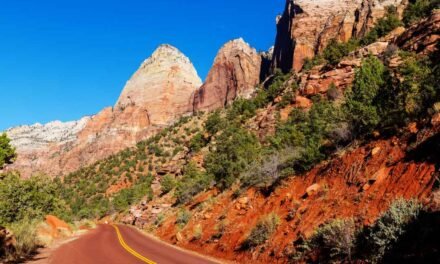Introduction: Denali National Park is a true jewel of the Alaskan wilderness, home to diverse ecosystems, breathtaking landscapes, and an abundance of wildlife. Its weather patterns are varied and fascinating, offering unique experiences throughout the year. In this blog post, we will explore the seasonal weather in Denali National Park, what you can expect to see and do during each season, as well as any seasonal closures and operating hours.
Spring Weather in Denali National Park
Spring in Denali National Park is a time of rebirth and renewal as the snow begins to melt and the landscape transitions from white to various shades of green. The weather during this season can be unpredictable, with temperatures ranging from 20°F to 60°F (-6°C to 15°C), and sudden changes between sunshine, rain, and snow are not uncommon.
Precipitation during the spring season is relatively low, but the melting snow can cause muddy conditions on trails and park roads. Despite the unpredictable weather, spring is a fantastic time for wildlife viewing, as many species are beginning to emerge from their winter dens and migratory birds return to the park.
Camping during spring can be a challenge, with cold temperatures and potentially muddy conditions. However, hardy adventurers can still find enjoyment and solitude in the park’s campgrounds, which are often less crowded during this season. Be prepared for cold nights and pack adequate clothing and gear to stay warm and dry.
Summer Weather in Denali National Park
Summer is the peak season for visitors to Denali National Park, and for good reason: the weather is generally mild and pleasant, with average temperatures ranging from 40°F to 70°F (4°C to 21°C). However, it’s essential to note that the weather can change rapidly, and rain is not uncommon.
During the summer months, the park experiences long days with up to 20 hours of daylight, allowing visitors to enjoy extended hours of outdoor activities such as hiking, wildlife viewing, and camping. The park’s main road, Denali Park Road, is fully accessible during this season, enabling visitors to explore deeper into the park’s wilderness.
Camping in Denali National Park during the summer offers the best conditions and access to facilities. Many campgrounds are open and operational, and the warmer temperatures make for comfortable camping experiences. Wildlife sightings are common during this time, with opportunities to spot bears, moose, caribou, and Dall sheep, among others.
Fall Weather in Denali National Park
Fall brings a stunning display of colors to Denali National Park, as the foliage transforms into vibrant hues of red, orange, and yellow. Temperatures begin to drop, with average daytime temperatures ranging from 30°F to 50°F (-1°C to 10°C), and nights becoming significantly colder.
Precipitation is generally low in the early fall, but snowfall can begin as early as September. As the season progresses, park facilities and services may begin to close or reduce their operating hours in preparation for the upcoming winter season.
Fall is a prime time for wildlife viewing, as many species prepare for the winter months ahead. Visitors might catch a glimpse of bears foraging for food, moose seeking mates during the rut, and the park’s iconic caribou undertaking their annual migration.
Camping during the fall season can be an enjoyable experience, but visitors should be prepared for cold temperatures and potential snowfall. Make sure to pack appropriate clothing, and check on campground availability and operating hours as the season progresses.
Winter Weather in Denali National Park
Winter in Denali National Park is a truly magical experience. The landscape is transformed into a snow-covered wonderland, offering a serene and peaceful environment for those who venture into the park. Temperatures during the winter months can range from -40°F to 20°F (-40°C to -6°C), and heavy snowfall is common, creating ideal conditions for winter sports enthusiasts.
Despite the cold and snow, winter in Denali National Park offers a range of activities, such as cross-country skiing, snowshoeing, and dog sledding. The park’s main road, Denali Park Road, is closed to most vehicles beyond mile 3, but visitors can still access the park by snowshoe, ski, or dog sled.
Wildlife sightings are less common during the winter months, but visitors may still spot resilient species such as ptarmigan, moose, and foxes. Additionally, the long, dark nights provide opportunities for viewing the mesmerizing northern lights, a natural phenomenon that many visitors find unforgettable.
Camping in Denali National Park during winter is not for the faint of heart. While some campgrounds may be closed or have limited services, winter camping is possible for experienced and well-prepared adventurers. Be sure to research the park’s specific winter camping regulations and ensure that you have the appropriate gear and clothing to stay safe and warm.
Conclusion
Denali National Park’s weather is as diverse and dynamic as the park itself, offering visitors unique experiences throughout the year. Each season brings its own set of challenges and rewards, making every visit to the park a distinct and memorable adventure. Whether you prefer the vibrant colors of fall, the quiet serenity of winter, the rejuvenating energy of spring, or the long, sunny days of summer, Denali National Park has something to offer for everyone.


